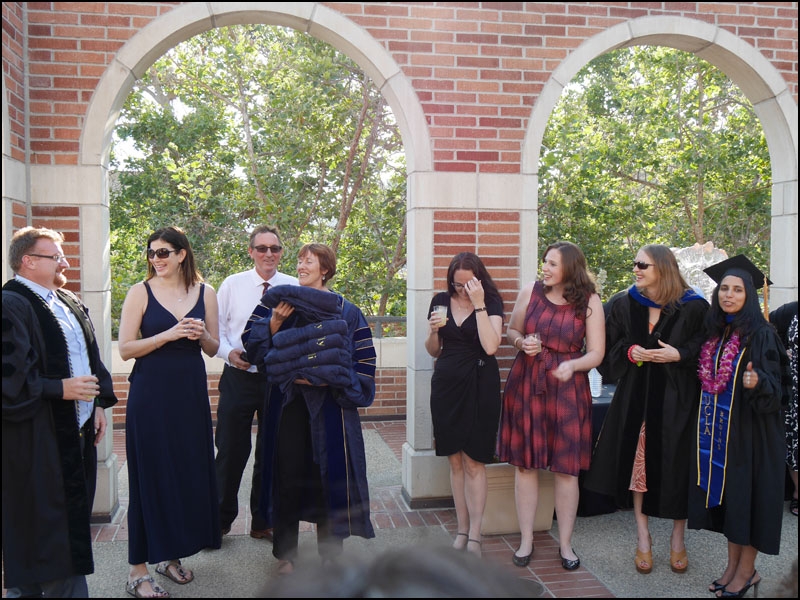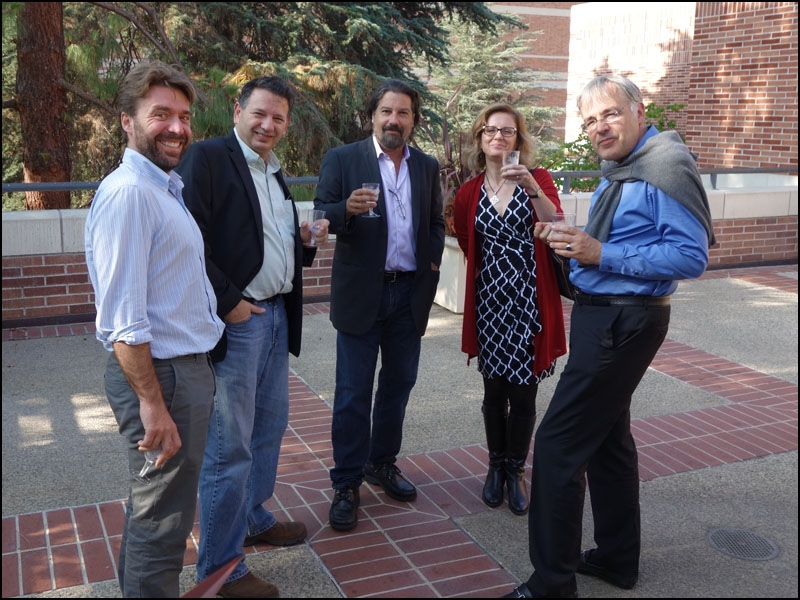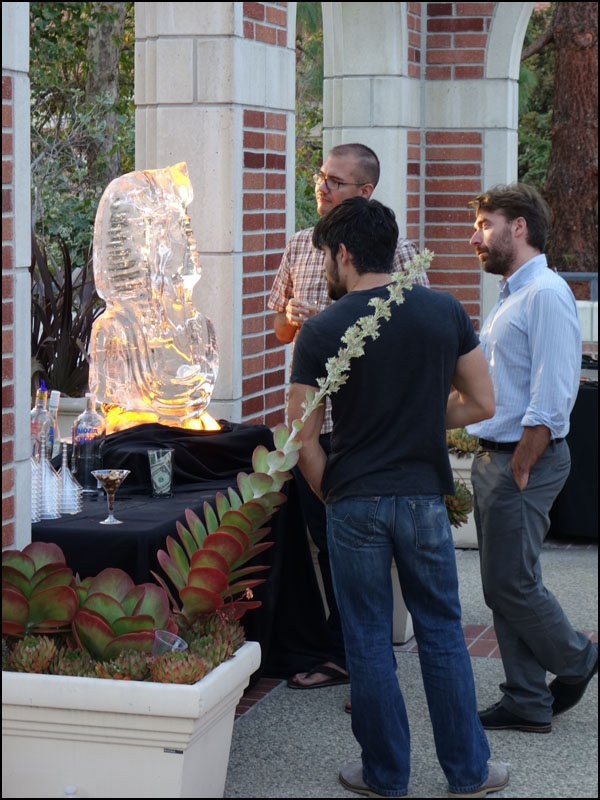Six Egyptology Graduates Hooded
No less than six graduate students Egyptian archaeology received the doctoral hood in June 2015. In alphabetical order these were: Anne Austin, Emily Cole, Sonali Gupta-Agarwal, Bethany Simpson, Angela Susak Pitzer, and Eric Wells. Directly following the ceremony in Royce Hall they were acknowledged at a reception on the roof of the Fowler Museum.
Anne Austin, who could not be present, combines the fields of Egyptology and osteology in order to document medicine and disease in the past. Emily Cole studies the social history of Egypt from the first millennium BCE onward from both a philological and archaeological perspective. Sonali Gupta-Agarwal was able to identify ancient communities of potters in Karanis, in northwestern Egypt, based on insights gleaned from ethnoarchaeological research in both Egypt and India. Bethany Simpson examined domestic architecture in the ancient world and the relationship of private versus public spaces, using Karanis as case study. Angela Susak Pitzer performed a study combining archaeological and analytical data with ethnoarchaeological and historical insights in order to examine the Roman glass from Karanis and understand how value was assessed in the ancient world. Eric Wells studies the social history and religion of Egypt in the New Kingdom employing philological, art historical and quantitative methodologies to examine the ways in which individuals express social identities and status through religious material culture and text.
The Egyptology section at the Department of Near Eastern Languages and Cultures at UCLA consists of three faculty members: Kara Cooney, Jacco Dieleman and Willeke Wendrich. Together they study, publish and teach the art and architecture, language, and archaeology of Ancient Egypt, from the Epipaleolothic up to the advent of Islam in the seventh century CE. Recently, much public interest was generated by Kara Cooney’s book “The Woman Who Would Be King: Hatshepsut's Rise to Power in Ancient Egypt.” UCLA Egyptologists oversee two large, on-going online projects: the UCLA Encyclopedia of Egyptology (UEE, http://uee.ucla.edu/) and, together with the Deutsches Archäologisches Institut, Ancient Egyptian Architecture Online (AEGARON, http://dai.aegaron.ucla.edu/). Their work also includes two field projects, one comprising the excavation of the Greco-Roman city of Karanis (Kom Aushim) in the northern Fayum Oasis, just southwest of Cairo, combined with the study of the Epipaleolithic remains in the deserts in the vicinity; the other a project to study and publish the coffins held in museums throughout Europe. Another research focus is philology, in particular the intersection of ritual and scribal culture in the first millennium BCE and the Hellenistic and Roman periods. By editing unpublished liturgical and magical papyri, the social dynamics of ritual practice and the interaction of Egyptian and Greek language and culture are investigated.

Five of the six recent graduates in Egyptian archaeology are acknowledged during the reception on the roof of the Fowler Museum.

Faculty and staff of the Cotsen Institute joined in the festivities.

Guest of honor was an ice luge in the shape of Pharaoh Tutankhamun.


